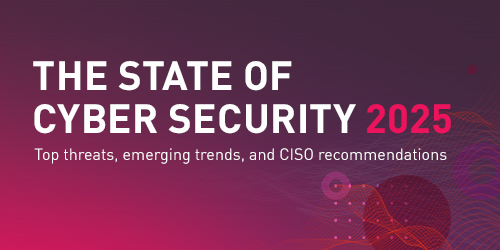What is SIEM?
SIEM tools work by continuously collecting, analyzing, and correlating log data from various sources across an organization’s IT environment. By centralizing this information, SIEM solutions detect suspicious activity in real time, issuing alerts when potential threats arise.
These tools use predefined rules, machine learning, and AI-driven analytics to identify patterns that could indicate:
- Cyberattacks
- Insider threats
- Policy violations
Also, SIEM solutions enhance incident response by automating workflows.
What is SOAR?
SOAR recognizes the potential of raw security visibility – but also the downsides of the first-line security tools that handle all of this. When a SOC analyst receives all of these alerts, the most time-consuming part of their role is often spent comparing one alert to another.
SOAR automates this by ingesting the alerts coming from other security tools and cross-referencing the relevant security data to establish each alert’s legitimacy and whether they’re different parts of the same attack chain.
Because a SOAR is able to ingest data from all security tools, they’re the perfect platform through which to apply AI:
- More basic AI just takes all security alerts and ranks them in accordance with their potential severity. While basic, this approach can still save many hours of manual work.
- More advanced SOAR AI is able to compare different tools’ alerts against the raw security data that triggered it. It can then automatically verify each alert by looking at user and device behavior.
By leveraging AI’s ability to correlate large datasets, SOAR allows SecOps teams to identify and address the most pressing threats far faster than more basic tools like SIEM.
The 4 Differences Between SIEM and SOAR
To illuminate the differences between the two, consider SIEM and SOAR segmented across the following lines:
#1: Data Sources
SIEM focuses on collecting, correlating, and analyzing log files, which are generated by individual network devices, endpoints, and applications.
To achieve this, the SIEM collects and processes high volumes of raw, unstructured log data.
SOAR draws on incidents that have already been identified by other security software and compares them against data points from other areas of the organization’s security stack. It works with both structured data like security alerts, threat intelligence, and playbook execution results, and unstructured data, like application and user behavior.
#2: Incident Detection
SIEM generates alerts using predefined rules. A correlation rule, also known as a fact rule, is a logical condition that triggers a specific action when a defined event occurs. For instance, “If a computer has a virus, alert the user.” These rules operate independently, without assessing event history, meaning they only respond to current conditions.
Each time a rule runs, it evaluates only the specified data set without considering past occurrences. Each rule needs to manually be put in place and refined over time, making SIEMs fairly resource-demanding.
SOAR detects security incidents based on a variety of unstructured data. For instance, adding historical behavioral data increases the accuracy of security alerts. This funnels prior network and device behavior into the SOAR.
Any deviations can be compared across the firewall and device activities in real-time, increasing alert fidelity.
#3: Incident Response Processes
SIEM automates data collection, normalization, and correlation. As a result, there’s very little scope for incident response. Human analysts are an essential part of the SIEM process, as that’s how incidents are investigated and responded to.
For instance, if a user clicks on a malicious download link, it’s up to the analyst to see the alert and respond appropriately.
SOAR offers extensive automation through playbooks. Playbooks are how SOAR platforms are able to take predefined actions and workflows based on specific events.
For instance, when a suspicious email is reported or flagged, the playbook:
- Extracts key indicators like sender details and links
- Cross-references them with threat intelligence sources
If identified as phishing, it automatically quarantines the email, blocks the sender, and removes similar messages from affected inboxes.
#4: Integration
SIEM draws all data from log files; these can be sent directly to the SIEM, alongside the time the log file was generated, and the system it came from.
Syslog is a common protocol for sending all of this log data over an enterprise network.
Because SOAR allows integration with a wide range of security tools. This is made possible by sensors – passive data collectors that sit on a network, server, or database, which send all relevant data to the SOAR.
Maximize Your Security with Check Point XDR
Check Point’s Extended Detection and Response solution delivers superior enterprise protection by unifying threat detection, response, and automation across the entire security ecosystem.
Unlike traditional segmented security tools, which operate in silos and require manual correlation, Check Point XDR seamlessly integrates SIEM, SOAR, and AI-driven analytics to provide real-time threat intelligence and automated response. This holistic approach ensures faster detection, reduced attack dwell time, and improved efficiency for security teams.
With managed XDR services, extended prevention and response (XPR), and a centralized SOC platform, Check Point empowers enterprises with a proactive, automated, and streamlined defense against evolving cyber threats.





